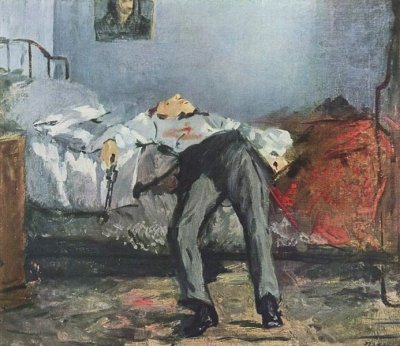
“All this buttoning and unbuttoning.”
— Anonymous 18th-century suicide note, cited in The Oxford Dictionary Of Quotations

“All this buttoning and unbuttoning.”
— Anonymous 18th-century suicide note, cited in The Oxford Dictionary Of Quotations
D.B. Wyndham Lewis’ 1930 collection The Stuffed Owl celebrates the very worst poetry ever written, such as congressman H.C. Canfield’s elegy on the loss of U.S. submarine S4:
Entrapt inside a submarine,
With death approaching on the scene,
The crew compose their minds to dice,
More for the pleasure than the vice.
But the jewel of the book is the subject index:
Adam, his internal fluids, 18
Bagpipes, their silence regretted, 151
Bards, dead, common objects of the sea-shore, 66
Beef, death-dealing, 239
Cabbage, true-hearted, 22
Englishman, his heart a rich rough gem that leaps and strikes and glows and yearns, 200-1; sun never sets on his might, 201; thinks well of himself, ibid.
Fire, wetness not an attribute of, 28
Goats, Welsh, their agility envied by botanist, 82
Golf, a remedy for unemployment, 16
Harp-string, damped by poet’s tears, 169
Incense of thanksgiving, upwafted from Leeds chimneys, 78
Muse, reformed by a pension, 5; fooled by grovelling sons of verse, 73; the manurial, 91; invited to celebrate Mr. Baker’s return to health, 109; proves unequal to the task, 110
Napoleon I, uncertainty as to his present whereabouts, 10
Newspaper editors, not always truthful, 240
Silk-worm, Spartan tastes of, 150; sinks into hopeless grave, 152
Stud-farms, essential to the Empire’s continued existence, 232
Woman, useful as a protection against lions, 118
Industrialist and gambler John “Bet-a-Million” Gates was lunching one day with John Drake, whose wealthy family had founded Drake University.
Gates proposed a bet. He dunked his bread in his coffee and placed it on his saucer. “You do the same,” he said, “and the piece that attracts the most flies wins. Shall we say $1,000 per fly?”
Drake agreed and lost $11,000. Gates made this bet many times, and he always won. His victims never noticed that he left his coffee untasted — because he’d added six spoonfuls of sugar.

The accompanying illustrations give the reader a fair idea of the results of a peculiar wreck that occurred on the Northern Division of the N.Y., N.H. & H. Railroad near Worcester, Mass., on February 2nd [1898]. Engine 823, a 50-ton freight locomotive, was pushing a snow plow at a high rate of speed when it collided with Engine 684, an eight-wheel locomotive of lighter weight, which was also running at a high speed, and pulling a milk train.
Five men who were in the snow plow jumped into a bank of snow and were uninjured. … Another strange feature of this peculiar wreck is that just previous to the collision the men in the snow plow discovered that the knob was off the door and they were locked in. They finally contrived to open the door, and on looking out saw the milk train coming. The snow plow was completely demolished. The wreck was caused by a telegraph operator going to sleep and allowing the snow plow to pass his station when he had orders to hold it.
— Locomotive Firemen’s Magazine, March 1898
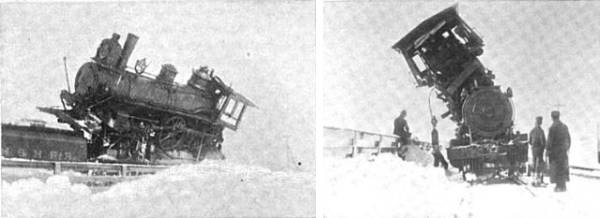
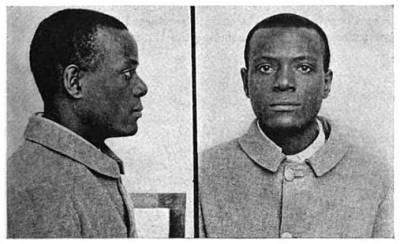
In 1903, a prisoner named Will West arrived at Leavenworth. The record clerk took the photographs above and, thinking he remembered West, asked whether he had been there before. West said no.
The clerk took some measurements, went to the file, and produced this record, bearing the name William West:
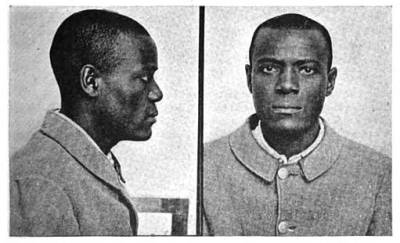
Amazed, the prisoner said, “That’s my picture, but I don’t know where you got it, for I know I have never been here before.”
Incredibly, this was true. A different William West had been serving a life sentence at Leavenworth since 1901, and the new prisoner had the same name, face, and measurements.
The case became a strong argument in favor of the new science of fingerprinting.
olitory
adj. produced in a kitchen garden
About the year 1772 there died at Mile End, England, a well informed goat, if traveling and seeing the world would make it so. It twice circumnavigated the globe; first in the discovery ship Dolphin, with Captain Wallis, and afterward in the ship Endeavorer, commanded by the celebrated Captain Cook. The Dolphin sailed from England August 22, 1766, and returned May 20, 1768. It visited many lands, including numerous islands of the Pacific, on this voyage. The goat did not remain ashore very long, for the Endeavorer sailed from Plymouth August 25, 1768. The vessel touched at Maderia, doubled Cape Horn, spent six months along the coast of New Zealand, and visited many other strange countries. It got back to England June 12, 1771. In the three years Cook lost thirty of his eighty-five men, but the goat returned in apparent good health. Arrangements were made to admit her to the privileges of one of the government homes for sailors, but she did not live to enjoy them. She wore a silver collar, with a Latin inscription prepared by Dr. Samuel Johnson.
— Albert William Macy, Curious Bits of History, 1912
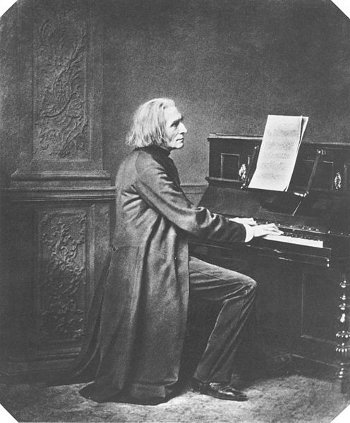
There was a composer named Liszt,
Who from writing could never desiszt.
He made polonaises
Quite worthy of praises,
And now that he’s gone he is miszt.
There was a composer named Haydn,
The field of sonata would waydn;
He wrote the Creation,
Which made a sensation,
And this was the work which he daydn.
A modern composer named Brahms,
Caused in music the greatest of quahms.
His themes so complex
Every critic would vex,
From symphonies clear up to psahms.
An ancient musician named Gluck
The manner Italian forsuck;
He fought with Puccini,
Gave way to Rossini,
You can find all his views in his buck.
— Anonymous
Thirty-year-old Polish laundryman Isidor Fink lived and worked in a large room on the ground floor of a tenement block on East 132nd Street in New York. Every door and window was secured with bars, bolts, and locks. Fink sublet two rooms at the rear to an elderly woman, but the door to these rooms was permanently bolted shut on both sides.
On March 9, 1929, Fink returned home at 10:15 p.m. At 10:30, the tenant heard screams and the sound of blows. She summoned a policeman, who found all the doors locked. Finally he sent a small boy through the transom to open the door. Fink’s body lay on the floor with two bullet wounds in the chest and one in the arm, which was powder-marked.
No weapon was found on the premises, the cash register was untouched, and all fingerprints were Fink’s. If this was suicide, where was the weapon? If Fink had been shot from a distance through the transom, how account for the powder marks on his arm? After 82 years, the laundryman’s death has never been explained.
On Dec. 30, 1947, the United States Hydrograph Office received the following wireless message from the Grace Line steamer Santa Clara, which was bound for Cartagena:
LAT. 34.34 N. LONG 74.07 W., 1700 GCT — STRUCK MARINE MONSTER EITHER KILLING IT OR WOUNDING IT. ESTIMATED LENGTH 45 FEET WITH EEL-LIKE HEAD AND BODY APPROXIMATELY 3 FEET IN DIAMETER. LAST SEEN THRASHING ABOUT IN LARGE BLOODY AREA ASTERN. SIGHTED BY CHIEF OFFICER WILLIAM HUMPHREY AND JOHN AXELSON, THIRD OFFICER.
The master of the ship, J. Fordan, published a detailed account, which was carried widely by the Associated Press:
Suddenly, John Axelson, the third mate, saw a snake-like head rear out of the sea about 30 feet off the starboard bow of the vessel. His exclamation of amazement directed the attention of the two other mates to the sea monster, and the three watched it unbelievingly as it came abeam of the bridge where they stood, and it was then left astern.
The creature’s head appeared to be about two and one-half feet across, 2 feet thick, and 5 feet long. The cylindrically shaped body was about 3 feet thick and the neck about one and a half feet in diameter. As the monster came abeam of the bridge, it was observed that the water around the monster, over an area of 30 or 40 square feet, was stained red. The visible part of the body was about 35 feet long. It was assumed that the color of the water was due to the creature’s blood and that the stem of the ship had cut the monster in two.
From the time the monster was first sighted until it disappeared in the distance astern, it was thrashing about as though in agony. The monster’s skin was dark brown, slick and smooth. There were no fins, hair, or protuberances on the head or neck or any visible parts of the body.
Possibly the creature was a monstrous oarfish; we’ll never know for certain.